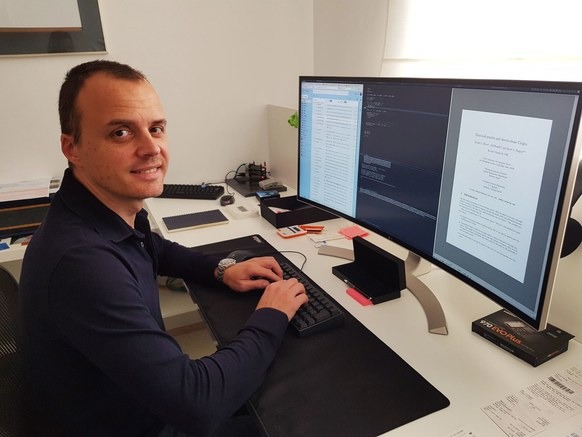A Belgian computer programmer has solved a cryptography puzzle set in 1999 by one of the leaders in the field – 15 years before it was expected by experts to be cracked. The puzzle was included in a time capsule created by architect Frank Gehry in his designs for the Computer Science and Artificial Intelligence Lab (CSAIL) at the famed Massachusetts Institute of Technology (MIT). It contained a history of computing to that date, and was intended to be opened after 35 years – unless someone could crack the puzzle.
Self-taught computer programmer Bernard Fabrot did it, 15 years ahead of the expected time, in mid-April. But then he ran into an unexpected hurdle: when he followed the puzzle's instructions to send his solution to the Laboratory for Computer Science at MIT, he found it no longer exists, now subsumed into CSAIL. And when he contacted CSAIL's director Daniela Rus, she had no idea what he was talking about.
The puzzle was set by cryptography professor Ron Rivest, who calculated that the number of operations a solution required would take 35 years to process, taking account of the speed of computers at the time and the likely increase during that period. It asks the solver to find the number that would result from carrying out nearly 80 trillion squaring operations – two squared is four; four squared is 16 and so on, 80,000,000,000,000 times.
That solution is then processed further to produce a brief phrase congratulating the solver. What the phrase is will be revealed on May 15, when Gehry's time capsule is opened.
Fabrot, who works as a freelancer coder, told Wired magazine, “During all these years I told no one I was trying to solve the puzzle except very close friends. I knew I had a chance, but if I told anyone they could have used a more powerful [computer processor] to overtake me.” He left his computer running 24 hours a day except for holidays, in order to carry out the massive number of calculations required. His reticence paid off: a group of cryptography experts had just developed specialised hardware designed to crack Rivest's code, and were close to finding a solution of their own.
Alan Hope
The Brussels Times
The Brussels Times

